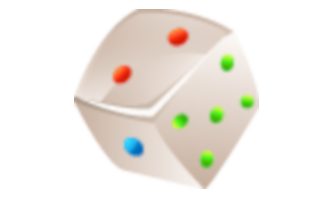Using Probability
Mathematics, Grade 7
Using Probability
Study Guide

Using Probability
Flash Cards

Using Probability
Quiz

Using Probability
Worksheets

Using Probability
Games

Study Guide Using Probability Mathematics, Grade 7
❮
1
/
3
❯
USING PROBABILITY Probability is the possibility that a certain event will occur. Probability is the chance of an event occurring divided by the total number of possible outcomes. Probability is based on whether events are dependent or independent of each other. • An independent event refers to the outcome of one event not affecting the outcome of another event. • A dependent event is when the outcome of one event does affect the outcome of the other event. The number of ways that an event can happen depends on the order. • A permutation is an arrangement of objects in which order matters. • A combination is a set of objects in which order does not matter. Just as probability refers to the possibility of an event happening, odds refer to the odds against an event happening. How to use probability The probability of one event occurring is equal to the chance of the event occurring divided by the total outcomes. Probabilities of independent or dependent events are based on how one event affects the other event, if at all. • For example, if there are 10 marbles in a bag with 4 blue and 6 red marbles, the probability of picking a red marble, putting it back and then picking another red marble is 6/10 · 6/10 = 36/100 or 9/25. This probability is independent because what happened the first time does not affect what happens the second time. This can be shown by the term 'with replacement', which means that the first item has been replaced. The probability of picking a red marble and then another red marble without replacing the first is 6/10 ·5/9 = 30/90 or 1/3. This probability is dependent because the first event affects the second event. © Copyright NewPath Learning. All Rights Reserved. Permission is granted for the purchaser to print copies for non-commercial educational purposes only. Visit us at www.NewPathLearning.com.
Since probability is divided by total outcomes, it is useful to be able to figure out the total outcomes. Permutations are a way to arrange objects in which order matters. • For example if there are 3 students and 3 chairs, the way the can be arranged is as follows: Ex. There are 3 chairs, ___, ___, ___. There are 3 students to choose from for the first chair, _3_, ___, ___. There are 2 students to choose from for the second chair, _3_, _2_,___. There is one student left for the last chair, 3_, _2_, _1_. The number of ways the 3 students can be arranged in 3 chairs is 3 · 2 · 1 or 3! = 6 ways. The notation, a!, means factorial, which is the product of the consecutive numbers from a to 1. A combination is another way to figure out total outcomes, but in the case of combinations, order does not matter. For example, how many different combinations can be made when picking 2 letters out of the word DOG? Ex. The combinations of two letters are: DO, DG, and OG Since order does not matter, DO and OD are considered the same. There are 3 ways to pick 2 letters out of the word DOG. Another concept with probability is odds. Odds refer to the odds against an event happening. Odds are used to compare unfavorable possibilities with favorable possibilities. For example, what are the odds of picking a seven out of a deck of 52 cards? Ex. There are 52 - 4 or 48 ways not to get a seven. There are 4 ways to get a seven. The odds against picking a seven are 48:4 The odds are 48:4 because there are 48 unfavorable possibilities compared to 4 favorable possibilities. © Copyright NewPath Learning. All Rights Reserved. Permission is granted for the purchaser to print copies for non-commercial educational purposes only. Visit us at www.NewPathLearning.com.
Try This! 1. What is the probability of picking a red card out of a deck of 52 cards, replacing it and then picking out an ace? 2. There are 4 red, 6 yellow and 5 blue marbles in a bag. What is the probability of picking a red marble, and without replacing it, then picking out a blue marble? 3. How many permutations can be made by arranging the letters in the word, MATH? 4. How many combinations can be made from picking two flavors of ice cream out of the flavors, strawberry, vanilla, chocolate and mint? 5. What are the odds against rolling the number 5 on a die? © Copyright NewPath Learning. All Rights Reserved. Permission is granted for the purchaser to print copies for non-commercial educational purposes only. Visit us at www.NewPathLearning.com.
